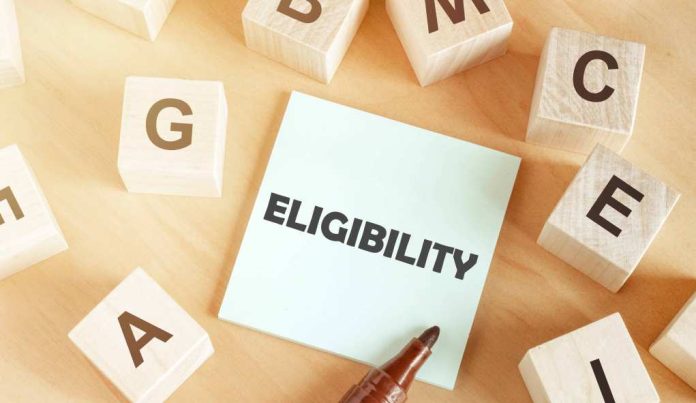Rent may be a financial strain for many individuals. In the United States, the cost of a typical apartment is $1,659 as of August 2022. Not everyone can afford to pay so much in rent if they are trying to keep their housing costs low. For example, a person working 40 hours per week at $13 per hour earns only $2,080 per month before taxes.
According to the United States Department of Housing and Urban Development (HUD), affordable housing costs should not exceed 30% of a household’s total monthly income. For example, a family should not spend more than $624 per month if their total monthly income is $2,080. That is significantly less than the typical cost of an apartment of $1,659! If you find yourself in such a tight spot and need help getting out, you should look into the Section 8 Housing Assistance program.
What is the Section 8 Program?
This program is officially known as the Housing Choice Voucher (HCV) Program. Section 8 is another name for it. HUD funds this program, but it is managed by local public housing authorities (PHAs). The HCV program, as the name suggests, offers low-income families and individuals housing choice vouchers. When the recipient finds a rental property, the local PHA pays the landlord through the housing voucher on behalf of the qualifying household. However, the unit that the recipients choose must fulfill certain housing quality requirements (HQS).
Is the Housing Choice Voucher Program Effective?
According to research, vouchers help reduce homelessness and assist individuals in other ways. By reducing rental expenses, housing vouchers enable families to spend more of their limited resources on other basic requirements. That’s important to keep in mind. Due to the fact that families that find themselves paying a large part of their income towards rent in turn spend less on food, clothes, health care, transportation, and other necessary expenses. Through this assistance, they can focus their income towards other needs.
The amount of money you will pay for rent after receiving support from the voucher will normally not exceed 30% of your earnings. However, if a family chooses a property that is over the payment standard, the property must not have a rent where the family spends more than 40% of their adjusted monthly income on rent.
Section 8 Eligibility
Your eligibility for assistance under the Section 8 program depends on four main factors, including the following:
- Your Family Situation
- Total Income Limit
- Citizenship Status
- Eviction History
To be accepted into the program, you must meet all of the requirements. There might be some exceptions to each condition, though. Keep in mind that particular qualifying requirements will vary by the locality.
You should also bear in mind that if you apply and are accepted, you will most likely be placed on a waitlist. Since there are so many families applying for this program, but there is only a limited amount of funding available, a waitlist is typically necessary. As a result, if you are accepted, you will receive your voucher eventually. Just be patient!
Your Family Situation
Your family status must meet specific standards to qualify for Section 8 help. Although HUD has a definition of a family, they also allow the local PHA to create their definition.
You should check with your local PHA to see whether your family qualifies. To check if your family qualifies for the program, use the following conditions as a basic guideline:
- There is at least one person above the age of 62 in your family.
- Your family has children or does not have children.
- At least one member of the family is with a disability.
- If your family has been forcibly relocated for qualifying circumstances.
It is crucial to note that you do not have to satisfy all of the requirements listed above! However, if you fulfill one of the requirements, you may be eligible. Changes in household size must be reported immediately since they affect the amount of assistance that you may get.
Total Income Limit
Another factor that impacts Section 8 assistance eligibility is the income level. Because the HCV program’s objective is to assist low-income people, applicants’ yearly income should not exceed a specific limit. Qualifying families often earn less than half of the local area’s median income (AMI). It varies from one area to the next. Find out what the criteria are in your area by contacting your local PHA. The following are examples of income types that an applicant should provide on the Section 8 application:
- Earnings from work
- Overtime earnings
- Bonuses and/or tips
- Social Security payments
- Disability Income
- Death benefits
- Payments from insurance
- Payments from unemployment
- Military compensation
- Alimony
- Child support
You might also need to provide recent bank statements to your local housing authority. The particular paperwork that you will be required to provide may also differ depending on the area.
Who Receives It First?
According to the law, at least 75% of HCV users must have an income that is no more than 30% of the local AMI. HUD determines the particular income limitations, which vary based on region. Aside from that, local PHAs have the option of choosing applicants on the waitlist based on local preferences. Specific preferences will differ, but here are some examples:
- Homeless people with no secure residence
- Those who are living in inadequate conditions
- Households that spend more than half of their income on rent
- Families that have been forcibly relocated
Citizenship Status
This program is only available to American citizens and eligible non-citizens. As a result, while applying for these benefits, applicants and family members living in their households must sign a certification form. These certification forms will show the individual’s citizenship status. However, your local PHA may request further documentation. This can include documents such as:
- Passports from the United States
- Registration cards
- Green cards
- Social Security cards
You will want to keep in mind that even if not everyone in your household has a qualifying citizenship status, your household still can qualify for assistance. Instead of the program providing support for all members of the household, it will only focus on those that do have an eligible citizenship status.
Eviction History
A person’s eviction history tells the local PHA about the type of tenant the recipient was before. Who knows, someone may have been untrustworthy or irresponsible in past leases. As a result, to qualify, families must normally have a positive rental history. Applicants who have been evicted from a property for drug-related crimes or other criminal activities may be immediately disqualified.
Conclusion
To recap, the Section 8 Assistance program may be the best solution to your challenge of finding housing that’s outside of your budget. If you qualify, you will likely have to wait sometime before receiving financial assistance. However, you will be able to save a large amount of money on your housing expenses thanks to this opportunity.
The Section 8 program allows participants to choose an eligible unit of their choosing and pays a portion of their rent to the landlord on their behalf using housing choice vouchers. The eligibility conditions will differ based on the specific area. Income level, family situation, citizenship status, and eviction history are the 4 important factors that local PHAs will consider regardless of the area. Contact your local PHA if you wish to start the process or if you have any concerns about this housing assistance opportunity.














